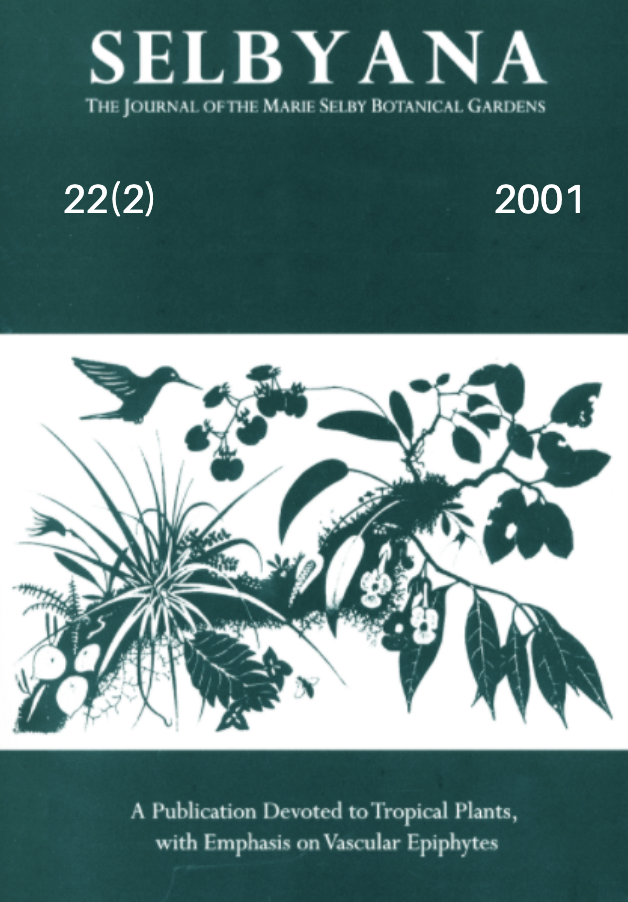Abstract
The aquatic communities occurring in terrestrial tank bromeliads under conditions of sun and shade were analyzed in relation to their richness and faunal composition. Three species of bromeliads were studied: Aechmea bromeliifolia, A. nudicaulis, and Neoregelia cruenta. The study area consisted of two sand dune formations ("restinga") on the southeast Brazil seashore. Ostracods (Elpidium) were the most common organisms. The species richness of shaded tanks was significantly higher than that of sun-exposed tanks. Community composition was more often similar between bromeliads growing under the same conditions of exposure than between bromeliads of the same species. Larvae of Dasyhelea ceratopogonids were associated with higher water temperature tanks, while Microculex culicids and copepods were more frequent at lower temperatures. These results suggest that invertebrate aquatic organisms do not display strong host specificity in choosing bromeliad tanks, but rather that microhabitat conditions are more important. Exposure to sun played a key role in determining richness and composition, probably by affecting water temperatures and by increasing the probability of desiccation.
Open Access and Copyright Notice
Selbyana is committed to real and immediate open access for academic work. All of Selbyana's articles and reviews are free to access immediately upon publication. There are no author charges (APCs) prior to publication, and no charges for readers to download articles and reviews for their own scholarly use. To facilitate this, Selbyana depends on the financial backing of the Marie Selby Botanical Gardens, the hard work and dedication of its editorial team and advisory board, and the continuing support of its network of peer reviewers and partner institutions.
Authors are free to choose which open license they would like to use for their work. Our default license is the Creative Commons Attribution-NonCommercial 4.0 (CC BY-NC 4.0). While Selbyana’s articles can be copied by anyone for noncommercial purposes if proper credit is given, all materials are published under an open-access license with authors retaining full and permanent ownership of their work. The author grants Selbyana a perpetual, non-exclusive right to publish the work and to include it in other aggregations and indexes to achieve broader impact and visibility.
Authors are responsible for and required to ascertain that they are in possession of image rights for any and all photographs, illustrations, and figures included in their work or to obtain publication or reproduction rights from the rights holders. Contents of the journal will be registered with the Directory of Open Access Journals and similar repositories. Authors are encouraged to store their work elsewhere, for instance in institutional repositories or personal websites, including commercial sites such as academia.edu, to increase circulation (see The Effects of Open Access).
